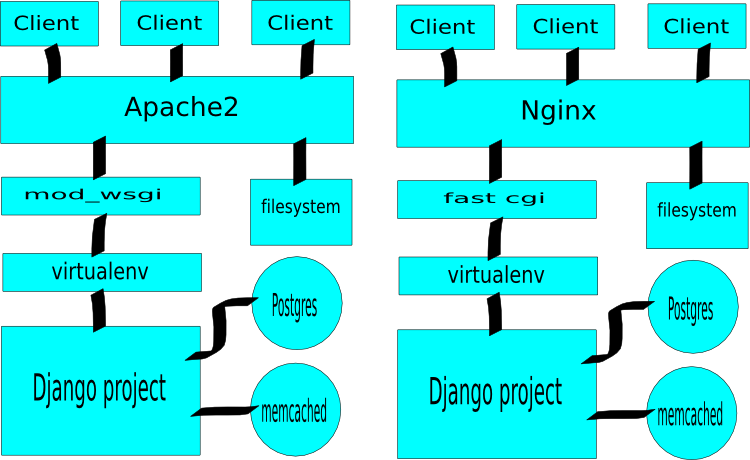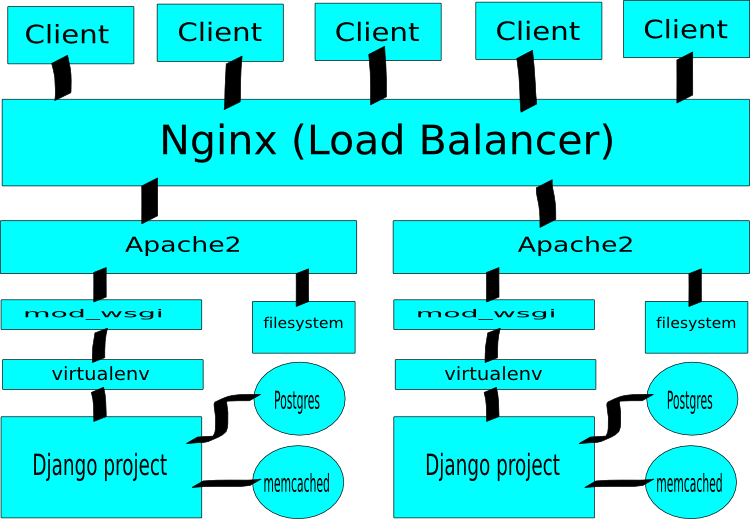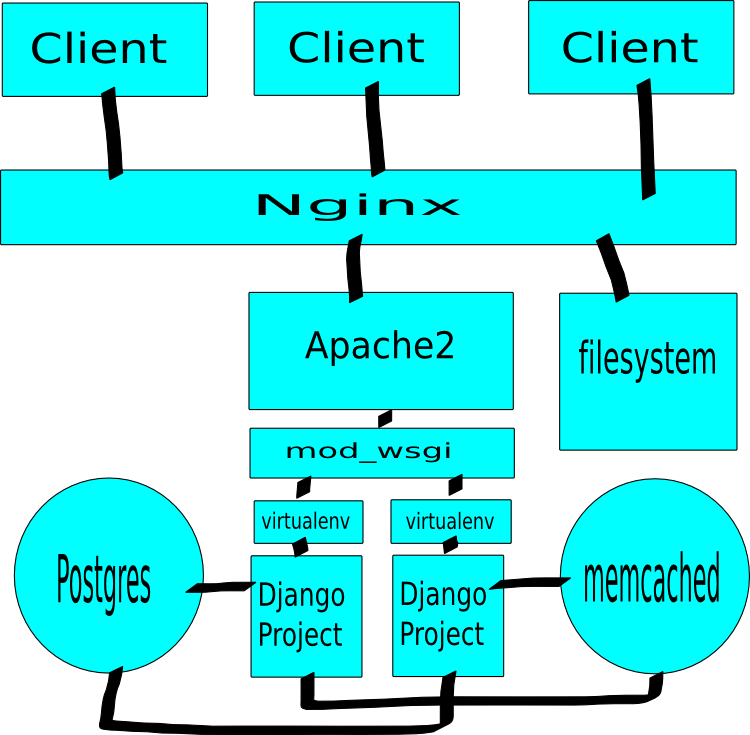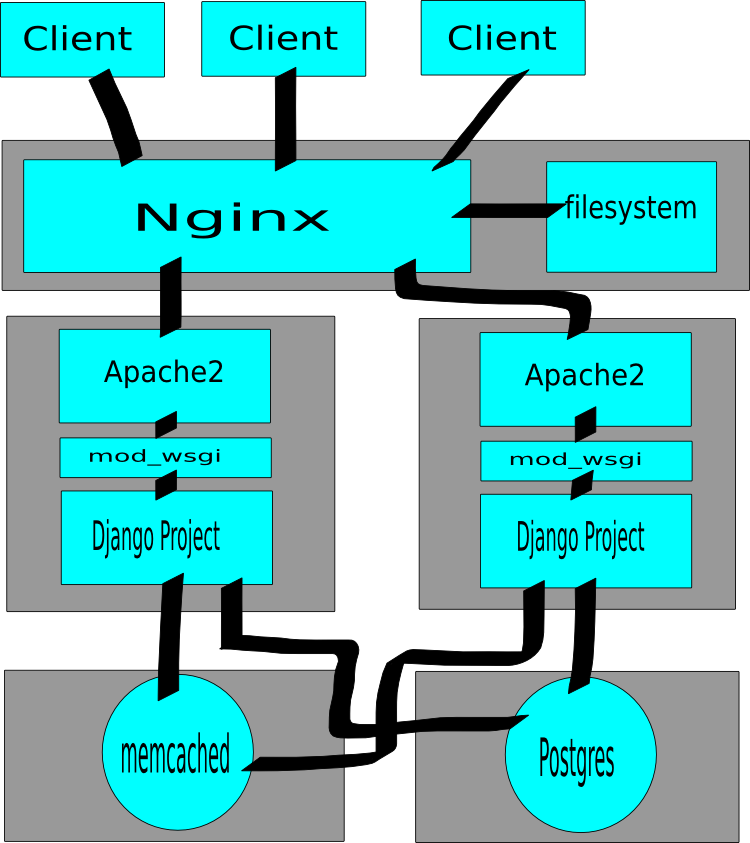JAX-WS Hello World Example – RPC Style
- Create a SOAP-based RPC style web service endpoint by using JAX-WS.
- Create a Java web service client manually.
- Create a Java web service client via wsimport tool.
- Create a Ruby web service client.
Note
In general words, “web service endpoint” is a service which published outside for user to access; where “web service client” is the party who access the published service.
In general words, “web service endpoint” is a service which published outside for user to access; where “web service client” is the party who access the published service.
JAX-WS Web Service End Point
The following steps showing how to use JAX-WS to create a RPC style web service endpoint.1. Create a Web Service Endpoint Interface
File : HelloWorld.javapackage com.mkyong.ws; import javax.jws.WebMethod; import javax.jws.WebService; import javax.jws.soap.SOAPBinding; import javax.jws.soap.SOAPBinding.Style; //Service Endpoint Interface @WebService @SOAPBinding(style = Style.RPC) public interface HelloWorld{ @WebMethod String getHelloWorldAsString(String name); }
2. Create a Web Service Endpoint Implementation
File : HelloWorldImpl.javapackage com.mkyong.ws; import javax.jws.WebService; //Service Implementation @WebService(endpointInterface = "com.mkyong.ws.HelloWorld") public class HelloWorldImpl implements HelloWorld{ @Override public String getHelloWorldAsString(String name) { return "Hello World JAX-WS " + name; } }
3. Create a Endpoint Publisher
File : HelloWorldPublisher.javapackage com.mkyong.endpoint; import javax.xml.ws.Endpoint; import com.mkyong.ws.HelloWorldImpl; //Endpoint publisher public class HelloWorldPublisher{ public static void main(String[] args) { Endpoint.publish("http://localhost:9999/ws/hello", new HelloWorldImpl()); } }
4. Test It
You can test the deployed web service by accessing the generated WSDL (Web Service Definition Language) document via this URL “http://localhost:9999/ws/hello?wsdl” .Web Service Clients
Ok, web service is deployed properly, now let’s see how to create web service client to access to the published service.1. Java Web Service Client
Without tool, you can create a Java web service client like this :package com.mkyong.client; import java.net.URL; import javax.xml.namespace.QName; import javax.xml.ws.Service; import com.mkyong.ws.HelloWorld; public class HelloWorldClient{ public static void main(String[] args) throws Exception { URL url = new URL("http://localhost:9999/ws/hello?wsdl"); //1st argument service URI, refer to wsdl document above //2nd argument is service name, refer to wsdl document above QName qname = new QName("http://ws.mkyong.com/", "HelloWorldImplService"); Service service = Service.create(url, qname); HelloWorld hello = service.getPort(HelloWorld.class); System.out.println(hello.getHelloWorldAsString("mkyong")); } }
Hello World JAX-WS mkyong
2. Java Web Service Client via wsimport tool
Alternative, you can use “wsimport” tool to parse the published wsdl file, and generate necessary client files (stub) to access the published web service.
Where is wsimport?
This wsimport tool is bundle with the JDK, you can find it at “JDK_PATH/bin” folder.
Issue “wsimport” command.This wsimport tool is bundle with the JDK, you can find it at “JDK_PATH/bin” folder.
wsimport -keep http://localhost:9999/ws/hello?wsdl
File : HelloWorld.java
package com.mkyong.ws; import javax.jws.WebMethod; import javax.jws.WebParam; import javax.jws.WebResult; import javax.jws.WebService; import javax.jws.soap.SOAPBinding; /** * This class was generated by the JAX-WS RI. * JAX-WS RI 2.1.1 in JDK 6 * Generated source version: 2.1 * */ @WebService(name = "HelloWorld", targetNamespace = "http://ws.mkyong.com/") @SOAPBinding(style = SOAPBinding.Style.RPC) public interface HelloWorld { /** * * @param arg0 * @return * returns java.lang.String */ @WebMethod @WebResult(partName = "return") public String getHelloWorldAsString( @WebParam(name = "arg0", partName = "arg0") String arg0); }
package com.mkyong.ws; import java.net.MalformedURLException; import java.net.URL; import javax.xml.namespace.QName; import javax.xml.ws.Service; import javax.xml.ws.WebEndpoint; import javax.xml.ws.WebServiceClient; import javax.xml.ws.WebServiceFeature; /** * This class was generated by the JAX-WS RI. * JAX-WS RI 2.1.1 in JDK 6 * Generated source version: 2.1 * */ @WebServiceClient(name = "HelloWorldImplService", targetNamespace = "http://ws.mkyong.com/", wsdlLocation = "http://localhost:9999/ws/hello?wsdl") public class HelloWorldImplService extends Service { private final static URL HELLOWORLDIMPLSERVICE_WSDL_LOCATION; static { URL url = null; try { url = new URL("http://localhost:9999/ws/hello?wsdl"); } catch (MalformedURLException e) { e.printStackTrace(); } HELLOWORLDIMPLSERVICE_WSDL_LOCATION = url; } public HelloWorldImplService(URL wsdlLocation, QName serviceName) { super(wsdlLocation, serviceName); } public HelloWorldImplService() { super(HELLOWORLDIMPLSERVICE_WSDL_LOCATION, new QName("http://ws.mkyong.com/", "HelloWorldImplService")); } /** * * @return * returns HelloWorld */ @WebEndpoint(name = "HelloWorldImplPort") public HelloWorld getHelloWorldImplPort() { return (HelloWorld)super.getPort( new QName("http://ws.mkyong.com/", "HelloWorldImplPort"), HelloWorld.class); } /** * * @param features * A list of {@link javax.xml.ws.WebServiceFeature} to configure on the proxy. * Supported features not in the <code>features</code> parameter will have their default values. * @return * returns HelloWorld */ @WebEndpoint(name = "HelloWorldImplPort") public HelloWorld getHelloWorldImplPort(WebServiceFeature... features) { return (HelloWorld)super.getPort( new QName("http://ws.mkyong.com/", "HelloWorldImplPort"), HelloWorld.class, features); } }
package com.mkyong.client; import com.mkyong.ws.HelloWorld; import com.mkyong.ws.HelloWorldImplService; public class HelloWorldClient{ public static void main(String[] args) { HelloWorldImplService helloService = new HelloWorldImplService(); HelloWorld hello = helloService.getHelloWorldImplPort(); System.out.println(hello.getHelloWorldAsString("mkyong")); } }
Hello World JAX-WS mkyong
3. Ruby Web Service Client
Often time, web service development is mixed use with other programming language. So, here’s a Ruby web service client example, which is used to access the published JAX-WS service.# package for SOAP-based services require 'soap/wsdlDriver' wsdl_url = 'http://localhost:9999/ws/hello?wsdl' service = SOAP::WSDLDriverFactory.new(wsdl_url).create_rpc_driver # Invoke service operations. data1 = service.getHelloWorldAsString('mkyong') # Output results. puts "getHelloWorldAsString : #{data1}"
getHelloWorldAsString : Hello World JAX-WS mkyong
Tracing SOAP Traffic
From top to bottom, showing how SOAP envelope flows between client and server. See #1 web service client again :URL url = new URL("http://localhost:9999/ws/hello?wsdl"); QName qname = new QName("http://ws.mkyong.com/", "HelloWorldImplService"); Service service = Service.create(url, qname); HelloWorld hello = service.getPort(HelloWorld.class); System.out.println(hello.getHelloWorldAsString("mkyong"));
Note
To monitor SOAP traffic is very easy, see this guide – “How to trace SOAP message in Eclipse IDE“.
To monitor SOAP traffic is very easy, see this guide – “How to trace SOAP message in Eclipse IDE“.
1. Request a WSDL file
First, client send a wsdl request to service endpoint, see HTTP traffic below :Client send request :
GET /ws/hello?wsdl HTTP/1.1 User-Agent: Java/1.6.0_13 Host: localhost:9999 Accept: text/html, image/gif, image/jpeg, *; q=.2, */*; q=.2 Connection: keep-alive
HTTP/1.1 200 OK Transfer-encoding: chunked Content-type: text/xml;charset=utf-8 <?xml version="1.0" encoding="UTF-8"?> <definitions xmlns:soap="http://schemas.xmlsoap.org/wsdl/soap/" xmlns:tns="http://ws.mkyong.com/" xmlns:xsd="http://www.w3.org/2001/XMLSchema" xmlns="http://schemas.xmlsoap.org/wsdl/" targetNamespace="http://ws.mkyong.com/" name="HelloWorldImplService"> <types></types> <message name="getHelloWorldAsString"> <part name="arg0" type="xsd:string"></part> </message> <message name="getHelloWorldAsStringResponse"> <part name="return" type="xsd:string"></part> </message> <portType name="HelloWorld"> <operation name="getHelloWorldAsString" parameterOrder="arg0"> <input message="tns:getHelloWorldAsString"></input> <output message="tns:getHelloWorldAsStringResponse"></output> </operation> </portType> <binding name="HelloWorldImplPortBinding" type="tns:HelloWorld"> <soap:binding transport="http://schemas.xmlsoap.org/soap/http" style="rpc"></soap:binding> <operation name="getHelloWorldAsString"> <soap:operation soapAction=""></soap:operation> <input> <soap:body use="literal" namespace="http://ws.mkyong.com/"></soap:body> </input> <output> <soap:body use="literal" namespace="http://ws.mkyong.com/"></soap:body> </output> </operation> </binding> <service name="HelloWorldImplService"> <port name="HelloWorldImplPort" binding="tns:HelloWorldImplPortBinding"> <soap:address location="http://localhost:9999/ws/hello"></soap:address> </port> </service> </definitions>
2. hello.getHelloWorldAsString()
A second call, client put method invoke request in SOAP envelope and send it to service endpoint. At the service endpoint, call the requested method and put the result in a SOAP envelope and send it back to client.Client send request :
POST /ws/hello HTTP/1.1 SOAPAction: "" Accept: text/xml, multipart/related, text/html, image/gif, image/jpeg, *; q=.2, */*; q=.2 Content-Type: text/xml; charset=utf-8 User-Agent: Java/1.6.0_13 Host: localhost:9999 Connection: keep-alive Content-Length: 224 <?xml version="1.0" ?> <S:Envelope xmlns:S="http://schemas.xmlsoap.org/soap/envelope/"> <S:Body> <ns2:getHelloWorldAsString xmlns:ns2="http://ws.mkyong.com/"> <arg0>mkyong</arg0> </ns2:getHelloWorldAsString> </S:Body> </S:Envelope>
HTTP/1.1 200 OK Transfer-encoding: chunked Content-type: text/xml; charset=utf-8 <?xml version="1.0" ?> <S:Envelope xmlns:S="http://schemas.xmlsoap.org/soap/envelope/"> <S:Body> <ns2:getHelloWorldAsStringResponse xmlns:ns2="http://ws.mkyong.com/"> <return>Hello World JAX-WS mkyong</return> </ns2:getHelloWorldAsStringResponse> </S:Body> </S:Envelope>
Download Source Code
Download It – JAX-WS-HelloWorld-RPC-Example.zip (14KB)




